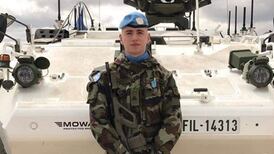Computers aren't yet smart enough to do what a brain can do but they might be clever enough to model how the various parts of the brain interact. An interdisciplinary group at University College, Dublin, hopes to do just that and in the process gain fresh insights into how the brain works.
The project will involve research academics in Computer Science, Math/Physics and Psychology and recently won £44,000 (€55,870) in funding for basic research under a scheme operated by Enterprise Ireland.
The project flows from a theory of how the brain does what it does conjured up by Dr Ronan Reilly of the Department of Computer Science. He describes it as "cortical software reuse" and believes that brain function has a match in modern software engineering.
Software engineers use software "Lego blocks", taking parts off the shelf and assembling them to perform tasks. The blocks themselves can be re-applied in many circumstances and they can interact with one another. "I am applying that to brain function," Dr Reilly explained.
The brain, he said, is heavily interconnected so areas involved in say motor control have connections to areas where thought or interpretation occur, even though motor areas are not directly involved in these higher functions. All areas therefore have the potential to influence others.
"What we are trying to do in this project is bridge the gap between cognitive function and the underlying computational infrastructure" of the brain, he said.
Brain research is being pushed forward because of the introduction of new medical devices such as magnetic resonance imaging. These devices can watch the brain as it processes information. Researchers have been able to make connections between say sight or hearing or memory and the parts of the brain responsible for these functions.
"We have a lot of information about that but what we don't have is how it fits together, how it can be functionally fitted together," Dr Reilly said. In particular he is interested in the higher cognitive functions and he wants to develop a computer package that can model how the brain carries out these complex interactions.
It is a daunting task, hence the need to bring in several departments. Psychology will be represented by Dr Teresa Burke who is involved in research on patients that have experienced injuries to the front of the brain. Many of the high level brain activities are dependent on frontal areas and damage there can have unusual effects on cognitive function. "These areas seem to be key to symbol processing."
One effect is known as "perseveration" and it relates to the patient's ability to deal with changing patterns of rules. Given a set of numbers he might be able to show even numbers on request but when asked to change to odd numbers the patient has problems. "If they are told there are changes to the rules they can't deal with them, they can't take them in."
Powerful mathematical tools will be needed to develop the model, hence the involvement of Dr Ted Cox from Maths/Physics. The equations are from "Dynamical Systems Theory" which are sometimes used to describe dynamic systems such as fluid flow, an area of expertise for Dr Cox.
Most brain research centres on taking a logical approach to brain activity, Dr Reilly said. They hope this advanced mathematics will mimic the complexity of brain function.
Computer Science is represented by Dr Reilly and his colleague, Dr Tahar Kechadi, who recently won an international award for his work in high performance computing. High performance computing involves techniques such as parallel processing to squeeze more power and processing potential out of clustered computer systems.
There will be very heavy demands placed on the system and Drs Reilly and Kechadi will be responsible for designing and putting together the hardware and software architecture. Part of the problem, Dr Reilly said, would be developing the necessary tools. "We will be expecting to use lots of things off the shelf," he explained, but if these aren't available they will develop them from scratch.
The idea is to create a working model that will then be used to predict how cognitive function might be changed after disruption to various brain areas. The model can be tested and refined on the basis of patient data provided by Dr Burke.
The model could teach us much about the brain, Dr Reilly said. "It deepens our understanding of how the brain works. We are on the threshold. We have the data but we don't have the framework to be able to ask the clever questions."
He believes the model will enable those questions to be asked.












